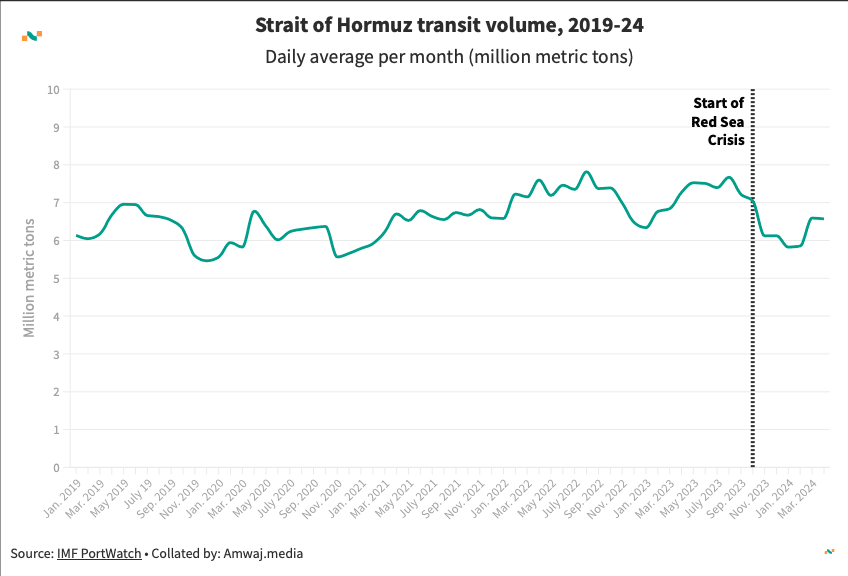The story: U.S. President Donald Trump says three key nuclear facilities in Iran have been “obliterated,” while threatening more strikes “if peace does not come quickly.” This comes as Amwaj.media has learned that Washington notified Tehran of the strikes. Speaking on condition of anonymity, a high-ranking Iranian political source confirmed that the Trump administration on June 21 conveyed that it did not seek an all-out confrontation, and only intended to strike the Fordow, Isfahan and Natanz nuclear sites. Importantly, the senior source also confirmed that the targeted sites were evacuated, with “most” of Iran’s stockpile of enriched uranium kept in secure locations.
The details: The U.S. bombings do not appear to have been conducted from any American military base in the region.
- Reports indicate that at least three B-2 bombers flying from the U.S. dropped six 13.6 ton (30,000 lbs) Massive Ordnance Penetrator (MOP) bombs on the Fordow underground uranium enrichment site. Experts speculate that two bombs were dropped on each of Fordow’s two main entrances along with two MOPs on the ventilation shaft.
- A submarine is believed to have fired 30 Tomahawk missiles at the Natanz uranium enrichment facility as well as the nuclear complex in Isfahan. Notably, both of the sites have been bombed by Israel in recent days.
- Citing a “well-placed source,” CBS has reported that “Isfahan and its underground facility was probably a harder target than Fordow.”

The damage: In his June 21 statement, Trump said the targeted Iranian facilities were “completely and totally obliterated,” warning that any potential future attacks would be “far greater and a lot easier.”
- The executive director of the Washington-based Foundation for Defense of Democracies (FDD) quoted an “impeccable Israeli contact” as saying, “The strike appears to have ended the Iranian nuclear program. Confirmation to come in the next 24 hours. The last step is to remove the nuclear material from the nuclear sites.”
- However, initial data that allows a damage assessment is still lacking. Prior to the bombings, some studies suggested that multiple MOPs would need to be dropped in the same craters given that Fordow is believed to be about 80-90 meters (262-295 feet) deep.
The reactions: Iranian authorities have confirmed that nuclear sites in Fordow, Isfahan and Natanz have been hit. However, no other details have been publicized.
- In a brief statement issued in the early hours of June 22 local time, the Atomic Energy Organization of Iran (AEOI) slammed the U.S. bombings as “a brutal act that contradicts international laws, especially the Treaty on the Non-Proliferation of Nuclear Weapons (NPT).”
- Taking aim at the International Atomic Energy Agency (IAEA), the AEOI said the U.S. attack was “unfortunately carried out in the shadow of indifference and even the support” of the UN nuclear watchdog.
- The AEOI stated that it “assures the great Iranian nation that despite the evil conspiracies of its enemies, with the efforts of thousands of its revolutionary and motivated scientists and experts, it will not allow the development of this national [nuclear] industry…to be stopped.” It added that it has “put the necessary measures, including legal proceedings, on its agenda.”
The future: Already under severe attack by Israel, Iran has little interest in a simultaneous all-out war with the U.S. Prior to the June 21 bombings, Tehran declared that it was open to resuming nuclear negotiations with the Trump administration—but only if Israel ceases its attacks.
- “They should make peace immediately. They should stop immediately. Otherwise they’ll get hit again,” Trump said in a brief phone interview ahead of his prepared remarks late on June 21 EDT. In his official statement, Trump elaborated, “There are many targets left. Tonights’ was the most difficult of them all, by far…but if peace does not come quickly, we will go after those other targets with precision, speed and skill.”
- Given that Iran is said to have received prior notice along with a private communication from the U.S. that it does not seek a broader conflict, it could be that Trump seeks a repeat of the events of Jan. 2020. The latter entailed a largely symbolic Iranian ballistic missile attack on American bases in Iraq over Trump’s authorization of the assassination of then-Quds Force commander Qasem Soleimani.
- Non-symbolical options at the disposal of Iran include measures such as exiting the NPT, expelling foreign inspectors, striking Israel’s Dimona nuclear facility and interrupting maritime transit in the Strait of Hormuz—possibility in coordination with Yemen’s Ansarullah movement resuming operations in the Red Sea. Each of these options carry costs and benefits, with an expulsion of foreign inspectors the most probable option. In terms of a kinetic response, the likelihood that no U.S. military bases in the region were used makes it more difficult for Iran to attack such facilities in at least Gulf Arab states. This leaves American bases in Iraq, which are already largely evacuated, the most probable targets for immediate retaliation.

- As Amwaj.media previously reported, Israel’s focus on the necessity for Trump to strike Fordow appears to have been designed to convince him to enter a war with Iran. Indeed, Iranian authorities have already indicated that nuclear materials were removed from Fordow. Moreover, sites known to the IAEA are unlikely to be used for a weaponization effort should Tehran decide on such a course of action. Against this backdrop, the likely near-term outcome of Trump’s attack on Iran appears to be lessened monitoring of nuclear activities in Iran as opposed to the end of the Iranian nuclear program.

